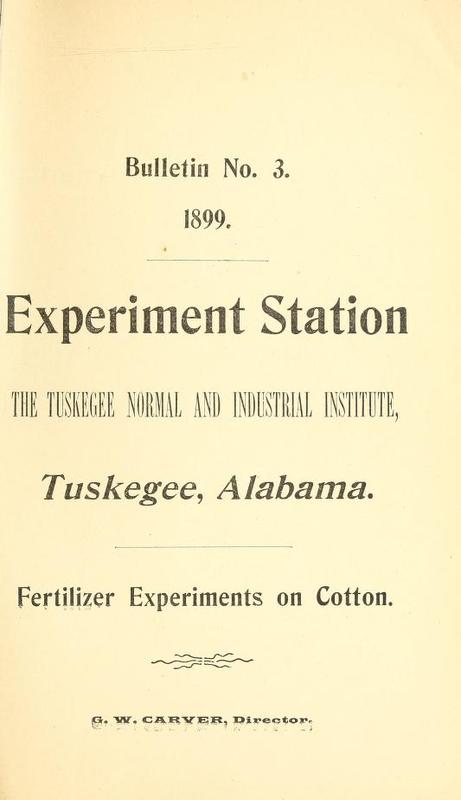Fertilizer Experiments on Cotton
Creator
Date
1899
Excerpt
The cotton fertilizer experiments made in 1898 are a continuation of a series of fertilizer soil tests commenced in 1897. The soil of the experimental field, a part of the station farm, is a light and sandy upland, with yellow clay subsoil.
The soil selected is excellently adapted for experimental purposes, having formed part of an old field which has been planted by the wasteful methods of the tenant system, year after year, for a long period. The soil was thoroughly “worn out’' as to its supply of fertilizing substances, nitrogen potash, and phosphoric acid, and was also in very bad physical condition. Its humus had long since been totally worked out and the top soil was very thin and with very little power to retain moisture. Even cow-peas failed to make a fair growth, on this soil before these experiments were begun, which is a pretty sure sign of a soil practically exhausted.
The soil selected is excellently adapted for experimental purposes, having formed part of an old field which has been planted by the wasteful methods of the tenant system, year after year, for a long period. The soil was thoroughly “worn out’' as to its supply of fertilizing substances, nitrogen potash, and phosphoric acid, and was also in very bad physical condition. Its humus had long since been totally worked out and the top soil was very thin and with very little power to retain moisture. Even cow-peas failed to make a fair growth, on this soil before these experiments were begun, which is a pretty sure sign of a soil practically exhausted.
Title
Fertilizer Experiments on Cotton
File(s)
Fertilizer Experiments on Cotton Cover.jpg
(image/jpeg)
 An official website of the United States government.
An official website of the United States government.


